
Walk Through the Wilderness of the Porcupine Mountains
Friend of 'The Porkies'
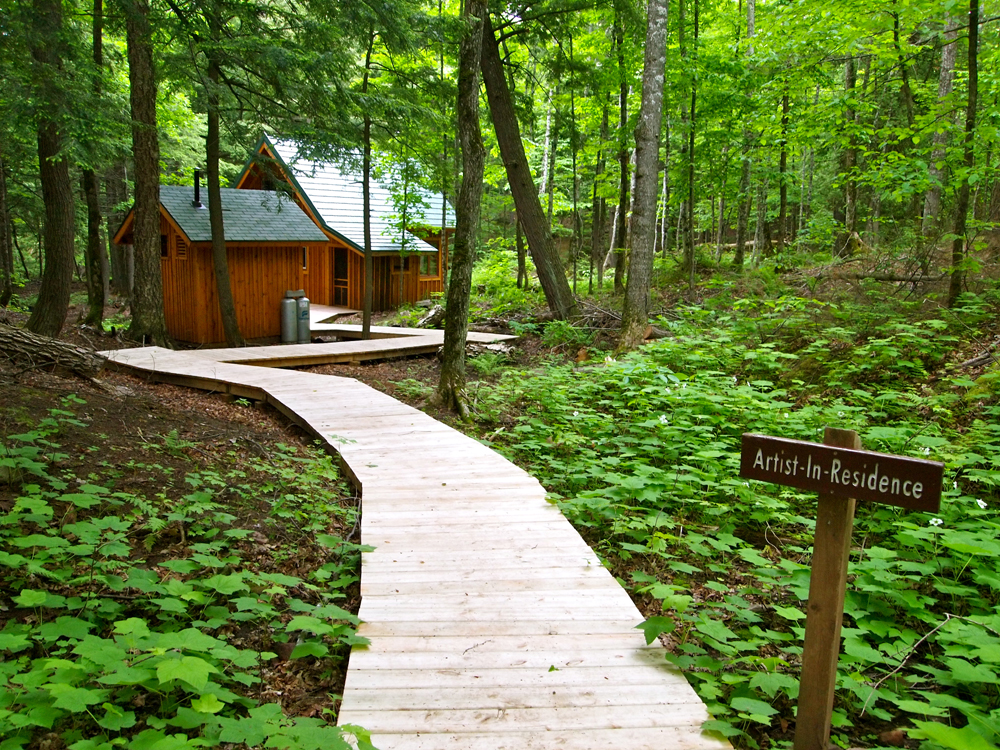
Open your eyes to stillness. Time suspended to the rhythm of raindrops and cascading sheets of water. Wrapped in a cocoon of mossy hemlocks and curly paper-birch boughs, this is the forest primeval. I'm here in the Porcupine Mountains on the chilly shores (even in June) of Lake Superior in Michigan's Upper Peninsula one of the wildest parts of the lower 48.
Known affectionately by locals as "the Porkies," this small group of low mountains straddling the shore of Lake Superior is one of America's undiscovered wild gems. Protected as the Porcupine Mountains Wilderness State Park, this wilderness is home to the largest remaining stands of old growth northern hardwood forest in North America west of the Adirondack Mountains.
Spanning over 31,000 acres (13,000 hectares) the Porkies' virgin forests, clean, roaring rivers, and long, rocky coastlines are a wonderful place to escape from the modern world to discover solitude and natural beauty. During my 10-day artist-in-residency as a guest of the Friends of the Porkies it rained most days but I didn't let it dampen my spirit to get outside and explore. Rather, it only accentuated the mood and mystique of the wilderness.
Porcupine Mountains Wilderness
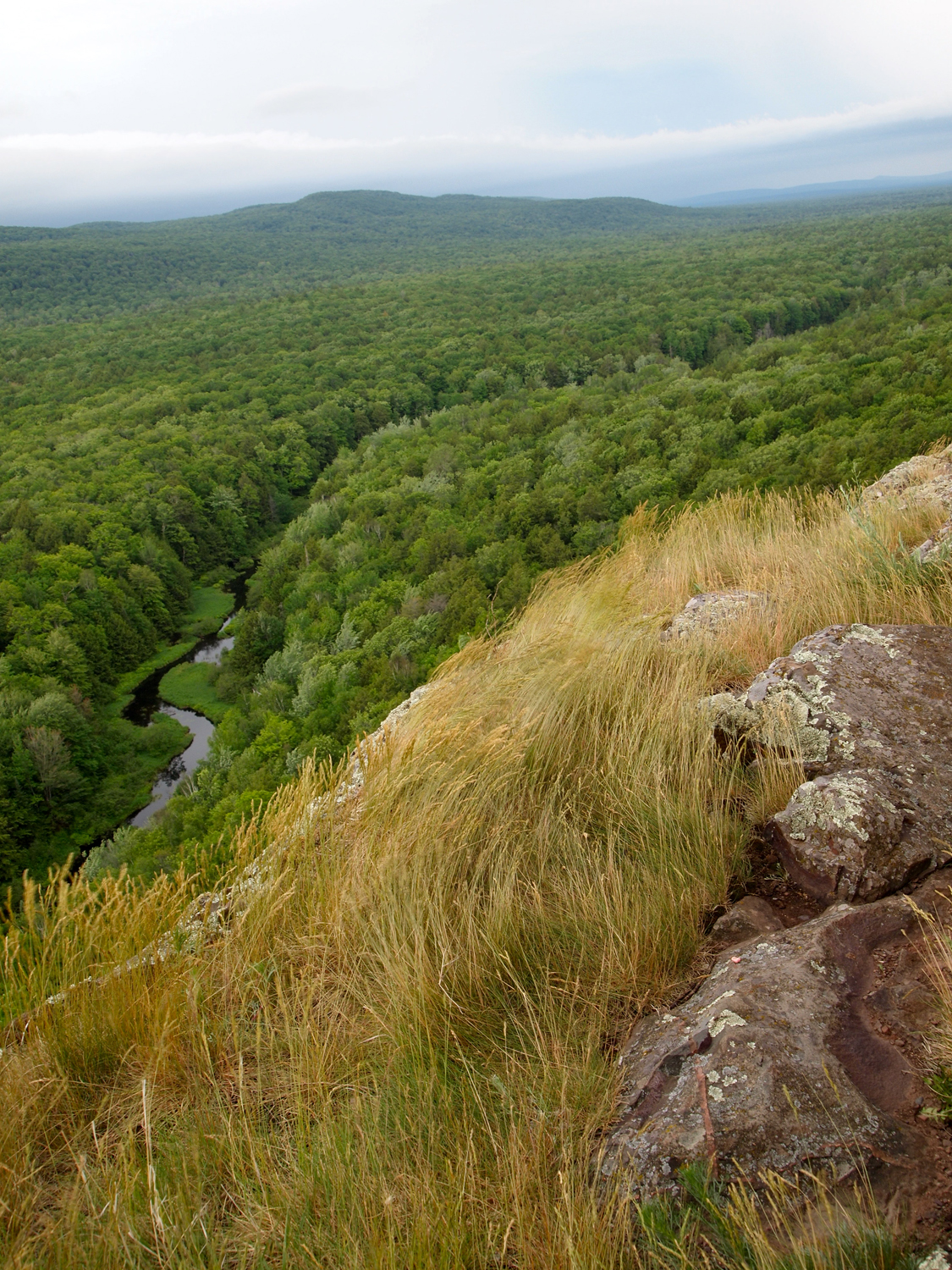
It is said the hunched silhouette of these mountains reminded the native Ojibwa of gaag, the porcupine. The name stuck and they continue to retain that distinction today rising over Lake Superior almost like the rounded back of a porcupine dotted with a shaggy coat of trees, like so many quills.
The landscape of this wilderness was sculpted from the great ice sheets that once blanketed much of North America during the ice age over 20,000 years ago. Though we take it for granted as a long distant event, the Earth's crust is still slowly rebounding from the massive weight of the ancient glaciers even today.
With basalt rocks that are over 3 billion years old, the Porkies are especially ancient. Containing rich iron formations, the northwestern Upper Peninsula has been important to the American steel industry for decades. The mountainous rock formations outside of the Porkies are the second largest producer of iron ore as well as copper in the United States.
Tempestuous Weather
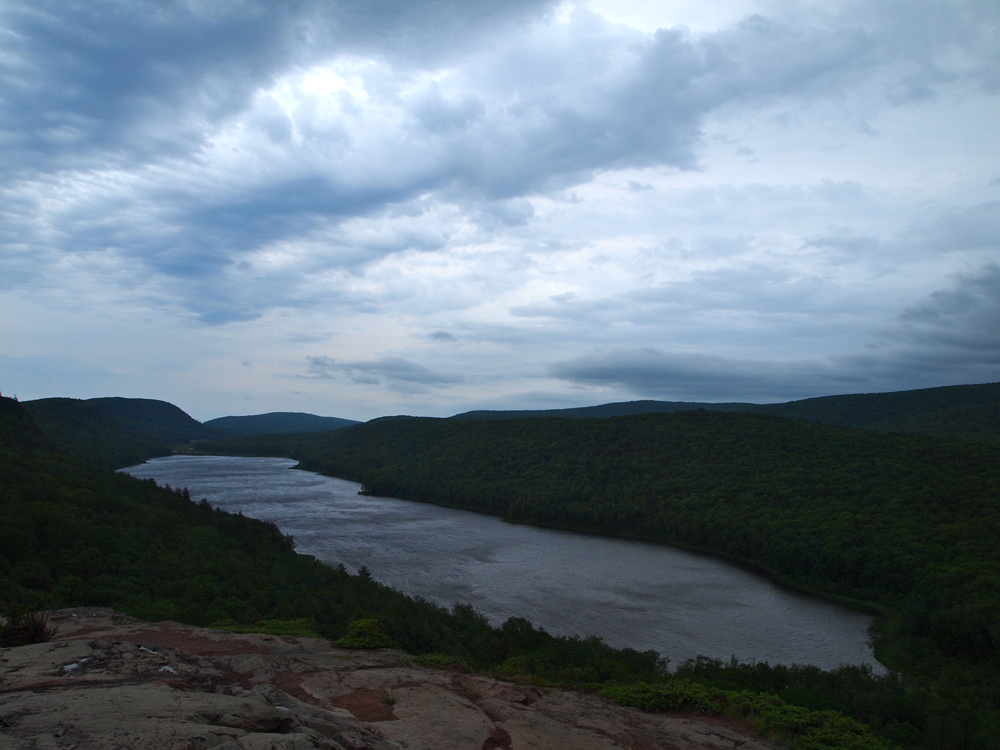
Looking down on the Lake of the Clouds, I see the winds ripple across the surface like strong gusts through a wheat field. As the storm approaches the crescendo rises to a violent shriek. Fat, cold raindrops splatter from different directions, sideways and up and down. Black vultures soaring over the valley below can barely maintain their control, swooping down to lower heights.
The weather in the Porkies is temperamental at best. Along these basalt and conglomerate ridges above the Lake of the Clouds and nearby Summit Peak, the highest point in the park reaches 1,958 feet (595 meters), and up to 300 inches (762 centimeters) of snow can accumulate in some winters.
The Porkies' high elevations and close proximity to Lake Superior create ideal conditions for lake effect snow accumulation. Coincidentally, these conditions also make for excellent cross-country skiing and bring in thousands of loyal visitors to the miles of backcountry ski trails in the park which are open every winter season.
Where the Wild Things Are
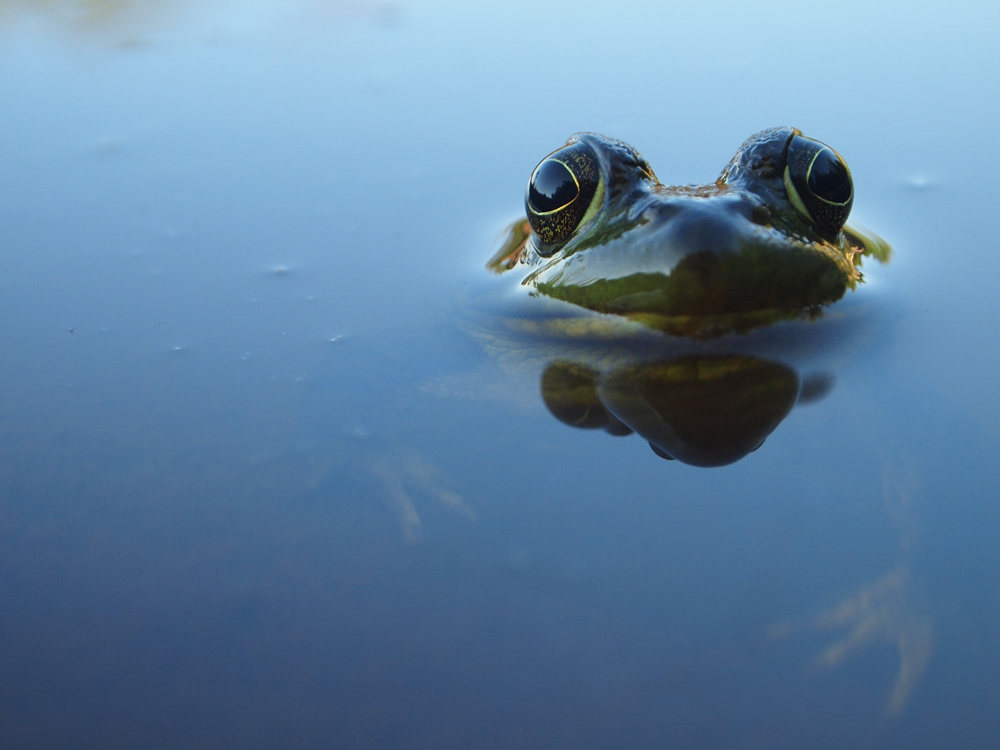
The eerie sing-song of wood thrushes dances and ricochets through the woods as sunbeams poke through the forest understory like so many holes punched into a paper bag to let in the day.
Hiking one of the Porkies' 90 miles (145 km) of backcountry trail, a biologist friend points out plants to me, including halfway fern, wild orchids, burdock and sassafras. Further along we spotted a broad winged hawk in a clearing, gazed into the depths of a natural spring, and picked wild strawberries as an afternoon snack.
These mountains are rich in wildlife, from small creatures like this curious green frog to huge moose and one of the densest black bear populations in Michigan. Though I saw very few animals on the backcountry trails, their signs were everywhere. Wolf, deer and black bear tracks decorated the muddy paths. The bear tracks were very fresh, from that day. Two sets, big and small, from mother and cub, quietly collect raindrops in their indentations. It makes me whistle a little louder as I hike.
Forest Primeval
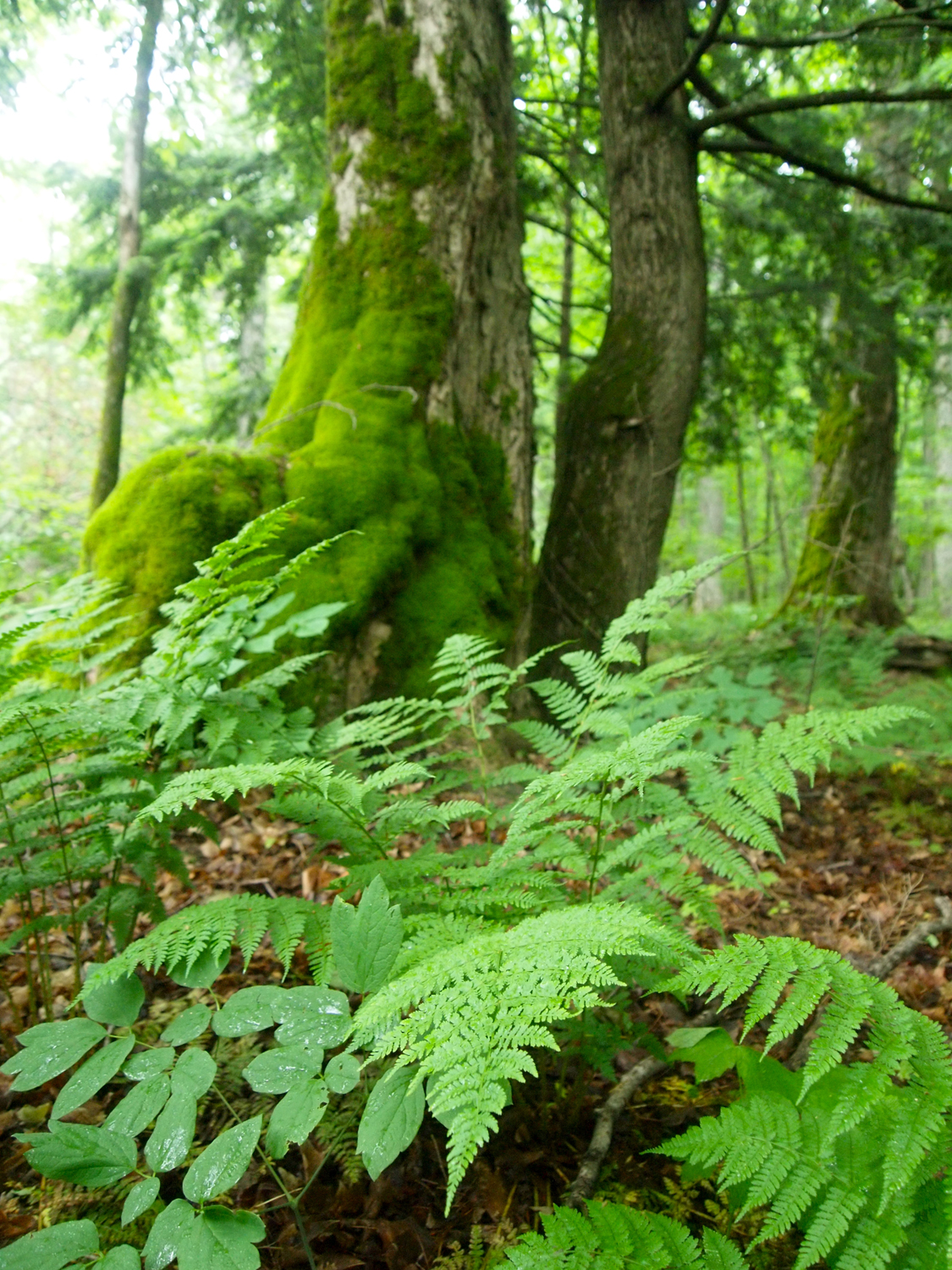
Tall primeval hemlocks jut into the misty air. The squawk of a raven echoes through the stillness and mysterious, mossy covered boulders lie prone among the trees. These forests feel truly enchanted and I half expect mythical creatures like elves or unicorns to emerge from the shadows and hidden folds of wood and fern.
Hemlocks are slow growing conifers that prefer cool, moist environments and occur from the southern Appalachian Mountains up to the Great Lakes and Canada. The Porkies house one of the largest remaining virgin stands of eastern hemlocks in North America.
Virgin stands like these are rare in many parts of the hemlock's range due to logging and the wooly adelgid beetle, an invasive sap-sucking bug from east Asia that has decimated southern populations. With climate change expected to shift many species distributions northward, including pests like the wooly adelgid, the fate of these northern giants remains in question.
If These Forests Could Talk
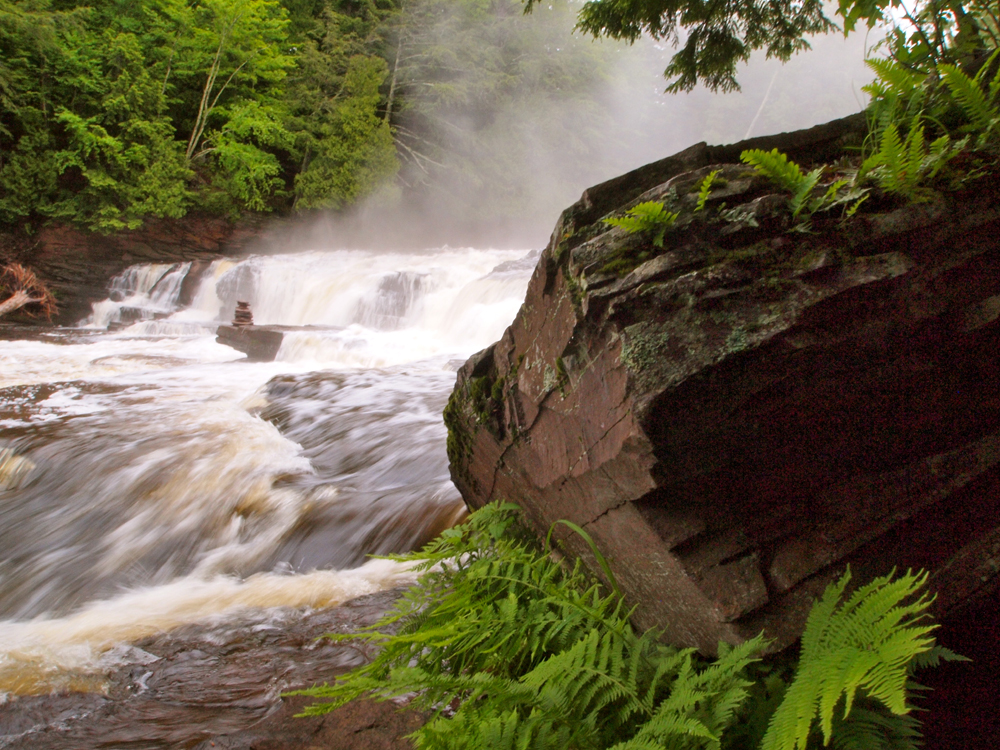
Descending the escarpment trail we are surrounded by stands of truly enormous sugar maples, birches and basswood trees. I can't help but wonder what stories these grandfathers and grandmothers could tell.
Spanning a long history of Native American settlement, change came to the Porkies with the arrival of Europeans in search of furs, minerals and timber. By the 1800's, with much of New England's forests already felled, the logging industry turned its gaze to Michigan's northern wilderness. Michigan forests, especially white pine, provided the lumber for the building of the Midwestern prairie towns. It was also Michigan lumber that rebuilt Chicago after the great fire of 1871.
By the early 1900's, much of the great forests were razed and few virgin stands like the Porkies remained. With pressure mounting to log these forests and time running out for federal legislation, the state of Michigan established the Porcupine Mountains Wilderness State Park in 1945 at the prompting of concerned residents, including the famed conservationist Aldo Leopold.
Wild and Scenic

Huge hemlocks and birch stand like imposing sentinels over the Presque Isle River. Glistening green stalks of blue-bead lily and tiny maple seedlings poke through the soil underneath these giants patiently waiting their chance.
The river roars over rocks stained brown from tannins in the leaves. Mists settle softly on shaggy conifers crowding the banks and a loan cormorant emerges from the misty portal, flying low above the river's natural highway. This is the kind of place any outdoorsman would feel at home in, including Ernest Hemingway, who fished the abundant rivers and streams of the Upper Peninsula as a kid.
The Presque Isle is the largest of many rivers that cut through the wilderness of the Porkies. Its main branch and surrounding watershed serves as an important and defining part of the Porkies ecosystem. The Presque Isle is so pristine that it is has been designated by Congress as an American wild and scenic river, one of only a handful throughout the United States.
Get the world’s most fascinating discoveries delivered straight to your inbox.
Unraveling the Porkies

Tall bunch grasses poke out from between the jumbled rocks by the lake shore. It was here I discovered waving stalks of the blue iris and a family of garter snakes. The snakes rustle in the dry grass and flee beneath the crevasses as I approach, but they left something behind. They forgot their skins! Leathery but transparent like wax paper, the skins are a perfect replica of a snake peeled away and undressed.
I pass tall cairns of rocks stacked by visitors. One is so tall it is almost my height with a smiley face for a head. I pass a family of mergansers in the shallows near the mouth of the Big Carp River and just catch the back end of a wood chuck dashing into the horsetails and rushes.
Unfinished scenes like these beg to be unraveled in the Porkies if you know how to pay attention. Through the simple act of observation anyone can become an astute naturalist and citizen scientist. This simple democracy of learning is one of the great joys of studying natural history. The only prerequisite is our own curiosity.
The Freshwater Sea

The Presque Isle River eventually drains out to Lake Superior, the largest and wildest of the Great Lakes. Big logs lie prone like matchsticks at the river mouth and colorful polished stones litter the shore. The enormous space of this vast freshwater sea is humbling, especially as cold winds rip across its surface in a shock to your exposed face. [The Great Lakes: North America's Third Coast]
The native Ojibwe called Lake Superior Gitchigami, meaning "big waters," and indeed these are big waters. Lake Superior is the largest, deepest and coldest of the Great Lakes and the world's third-largest freshwater lake by volume. It is so immense that drained of its 2,900 cubic miles (12,100 km) of water, it could cover the entire land masses of North and South America with a foot (30 cm) of water!
With over 25 miles (40 km) of wave-washed shoreline on Lake Superior, the Porkies are a wonderful place to beach comb, explore and be inspired by the convergence of the elements.
Spirit of the Wild
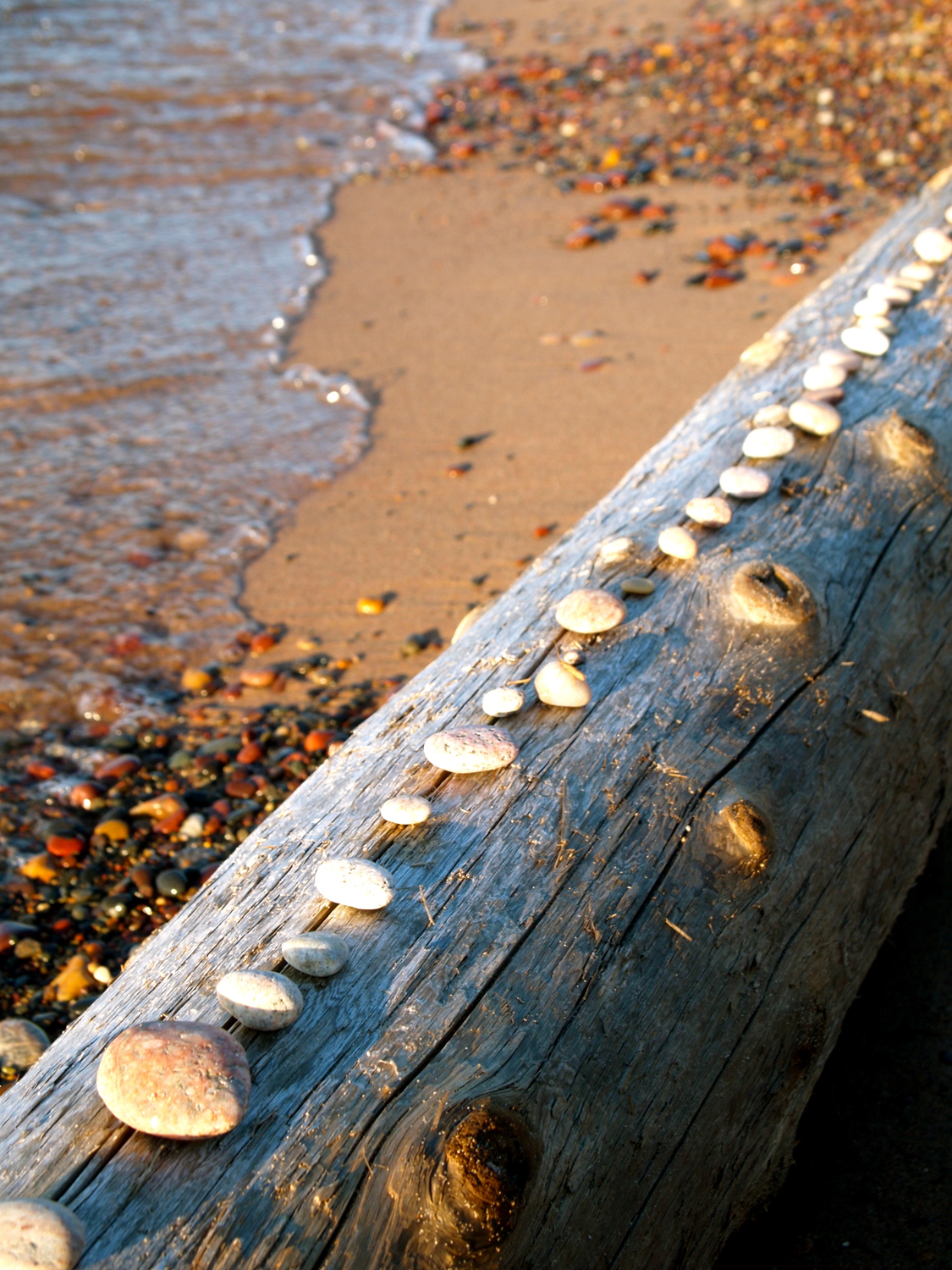
The idea of wilderness has evolved and changed over human history from something to be feared and conquered to something increasingly seen as valuable and sacred to us and the well being of our planet.
In 1964, these ideals were enshrined into legislation with the Wilderness Act to preserve natural lands exclusive of human use and development. Wilderness areas like the Porkies are vital for natural processes, the survival of species, and to many people for solitude, recreation and inspiration. Since the passage of the Wilderness Act, over 100 million acres (40 million hectares) have been designated as wilderness in the United States.
Near evening on my last day in the Porkies, cloudy skies finally gave way to crisp, bright sunshine as I walked Lake Superior's shore line with the lengthening shadows. The caress of grainy sand on my bare toes feels truly delicious. Often tempestuous, today the big waters are soft and smooth. As the day fades, big waters and big sky melt into the western horizon and light up the Porkies in a fiery silhouette as if to bid me a warm and fitting final farewell, while already beckoning me back again. [Related: The Great Lakes: North America's Third Coast]
 Live Science Plus
Live Science Plus





